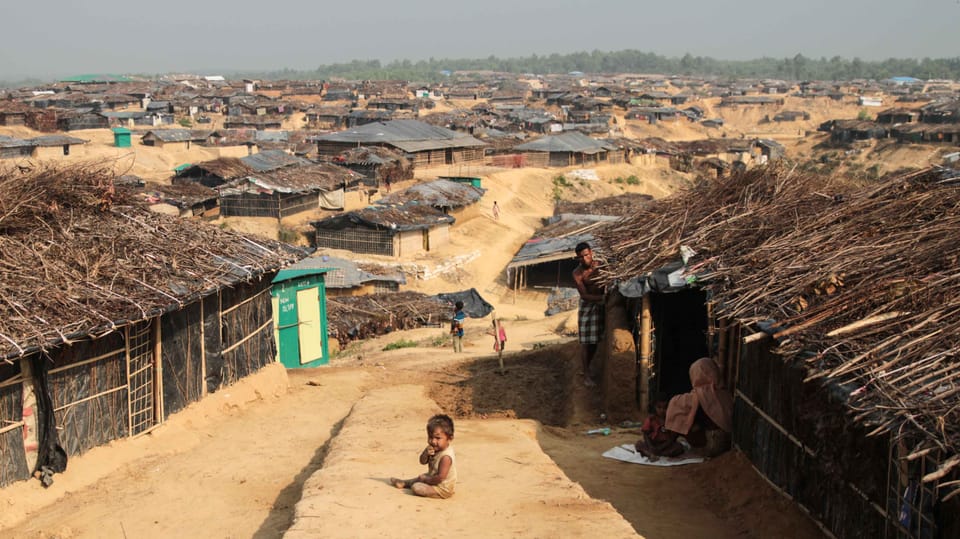The Rohingya Can’t Return — and the World Shouldn’t Pretend They Can

An interim Bangladeshi government meeting with the military junta in Myanmar at a recent BIMSTEC summit in Bangkok yielded a headline long awaited by the international community: Myanmar will repatriate 180,000 Rohingya so-called refugees (if we count them under review), 70,000 more. For Bangladesh — which has been home to over a million displaced Rohingya since 2017 — the offer may appear to be long-awaited progress. But what we are seeing is a much worse situation on the ground.
But there’s a fatal flaw in the junta’s plan: It no longer controls the region the Rohingya would return to.
This way, it’s still possible to travel between parts of Rakhine State, the historical homeland of the Rohingya, which are now mostly controlled by the Arakan Army, an ethnic armed group that has taken over large swathes of land in the region since the military coup in 2021. The AA now governs at least 13 of the state’s 17 townships, recent reports say — a swath of territory that includes most of the areas bordering Bangladesh and Myanmar. Fighting between the two sides has escalated in the meantime, with civilians — including Rohingya — once again in the crosshairs.
So where, precisely, should these refugees be returned to?
Previous repatriation attempts in 2018 and 2019 also failed when the conditions were unsafe and the promises empty, even under the control of the Myanmar army. Rohingya refugees would not go back to razed villages, apartheid-style clampdowns, and an ever-present threat of persecution. Now, with the conflict openly waging on the ground and no system in place to assist their reintegration, the junta’s promise appears not so much a solution as a political fig leaf — one that threatens to thrust vulnerable families back into the line of fire.
Bangladesh, already straining, has no reason to want a resolution. The camps in Cox’s Bazar are overcrowded, underfunded, and increasingly unstable. International assistance has been reduced, food rations have been decreased, and local frustration is boiling. The interim leadership of the country is doing what it can — and the chief adviser’s dialogue with Myanmar officials signals a desire to move on. But every plan for repatriation, no matter how well-intentioned, must not be initiated without guarantees in practice of the safety, rights, and dignity of returnees.
Those guarantees are not here today.
The United Nations has repeatedly emphasized that the situation in Myanmar is “not conducive” to repatriation. In Myanmar, the Rohingya continue to be stateless, stripped of citizenship under that country’s discriminatory 1982 law. Those who remained are confined to segregated camps and villages, unable to move freely, deprived of access to basic services. To add 180,000 more people to that system — even if logistically feasible — would do nothing but enlarge a human rights disaster.”
And what about the homes that were left behind? Satellite imagery and witness testimony confirmed that many villages were more or less razed during the 2017 crackdown. Some were bulldozed to clear land for military installations; others just vanished. Even those returnees who have a chance of surviving the journey back are unlikely to return to a place.
The international community must also face facts: the junta cannot be trusted to protect the Rohingya, and the objectives of the Arakan Army are unclear. But regional diplomacy must adapt to this new, and unwelcome, political reality in Rakhine. If the AA is serious about embracing political legitimacy in a post-junta Myanmar, it needs to make a clear — and credible — public commitment to protecting all ethnic groups, including the Rohingya.
In the interim, let us not abandon Bangladesh “to go it alone” in dealing with this crisis. The United States and its allies should boost humanitarian assistance, reinstate full food aid to the camps, and expand third-country resettlement opportunities. First and foremost, they must call on Myanmar to end its apartheid policies, recognize Rohingya citizenship and ensure accountability for past atrocities — including genocide in 2017.
So the only acceptable standard for return is safe, voluntary and dignified. And until that is truly possible, any hasty repatriation scheme must be fought against. Rohingya lives depend on it.